Sipeed M1s and M0sense - affordable AI modules based on BL808 and BL702
Firm Sipeed has launched new M1s and M0Sense AI modules. Designed for AIoT applications, the M1s is based on a 32-bit/64-bit RISC-V core wireless SoC from Bouffalo Lab — BL808 with Wi-Fi, Bluetooth and 802.15.4 radio for Zigbee support. And a BLAI-100 module (Bouffalo Lab AI engine) — a neural network gas pedal for detection and/or recognition in video/audio footage. Sipeed M0Sense, on the other hand, is designed for TinyML-based applications with Bouffalo Lab's BL702 32-bit microcontroller, also offering WiFi, BLE and Zigbee connectivity.
Sipeed M1s AIoT module
Sipeed M1S is a new version of the Sipeed M1 unit introduced several years ago, based on the Kendryte K210 chip.
Specification of the Sipeed M1s module:
* SoC — Bouffalo Lab BL808 with:
— Alibaba T-head C906 — 64-bit RISC-V core (RV64GCV+) clocked at 480 MHz,
— Alibaba T-head E907 — 32-bit RISC-V core (RV32GCP+) clocked at 320 MHz,
— 32-bit RISC-V core (RV32EMC) clocked at 160 MHz,
— RAM — 768 KB SRAM and 64 MB embedded PSRAM,
— AI gas pedal — BLAI-100 NPU (Bouffalo Lab AI engine) for detection/recognition in video/audio, providing up to 100 GOPS with a rich set of options,
— VPU – decoding of H.264 up to 1920 × 1080,
— 2.4 GHz Wi-Fi 802.11 b/g/n,
— dual Bluetooth 5.x (classic + BLE),
— IEEE 802.15.4 transceiver for Zigbee.
* Storage — 128 Mbit (16 MB) NOR Flash;
* Outputs with the following interfaces:
— Display — SPI, 8-bit parallel interface, RGB LCD,
— Camera — MIPI CSI and DVP interfaces up to 1080p,
— Audio — I²S and analog audio input/output,
— Network — RMII Ethernet,
— USB — USB 2.0 OTG HS,
— low-speed peripheral interfaces — UART, I²C, SPI, SDIO, ADC/DAC.
* Dimensions — 31 mm x 18 mm.
It appears that the developers of the module had previously considered the ESP32-S3, but the BL808 SoC provides more processing power and RAM. The table below compares the Sipeed M1, M1S and ESP32-S3-WROOM-1-N16R8 modules. The only thing that seems inaccurate in it is that the ESP32-S3 does not support AI acceleration, as this is not true. This SoC does support acceleration for machine learning algorithms.
One advantage of the BL808 is that it can support Linux, and the chip includes an MMU, so there is no need to deal with typical uClinux issues.
Sipeed also offers the Sipeed M1s Dock with a camera and display to demonstrate most of the functions of the M1s module.
Specification Sipeed M1s Dock:
* SoM — Sipeed M1s described above;
* Storage — MicroSD card slot that also supports JTAG mode;
* Display — 1.69-inch 280×240 resolution with capacitive touchscreen;
* Camera — 2MP built-in camera with MIPI CSI interface and LED flash (OV2685 sensor);
* Audio — MEMS analog microphone and line output;
* USB — 1x USB Type C with built-in converter for two serial ports and 1x USB 2.0 Type-C OTG HS;
* Expansion options:
— two 16-pin input/output connectors suitable for contact boards,
— 4-pin UART connector.
* Debugging — optional TF2JTAG interface;
* Miscellaneous — Reset, Boot and two user buttons;
* Power supply — 5V via USB Type-C port;
* Dimensions — 55 mm × 27 mm.
The company also offers a case for the Sipeed M1s Dock, as pictured with the microSD card and Sipeed M0Sense shown for scale.
The Sipeed M0Sense TinyML board
Sipeed M0Sense specifications:
* Microcontroller — Bouffalo Lab BL702 — 32-bit RISC-V (RV32) clocked at 144 MHz with 132 kB SRAM, 512 kB Flash, Bluetooth Low Energy connectivity;
* Display — optional 0.96 inch diagonal;
* USB — USB Type-C port;
* Sensor — built-in IMU and microphone;
* Expansion capabilities — two 8-pin connectors (holes for goldpins and fields for soldering SMD module) with GPIO, I²C, UART, SPI;
* Miscellaneous — RGB LEDs;
* Power supply — 5 V via USB-C port;
* Dimensions — 23 mm x 18 mm.
Software support
There are many ways to program boards, such as. via „drag-and-drop” applications, as both M1s Dock and M0Sense can be seen by the computer as storage devices, here via a lightweight Python script and more complete and flexible, using the SDK of the chips. Examples of this approach are available in the company's repository on GitHub.
Sipeed also offers two AIoT/TinyML solutions that work with new modules/boards and a range of third-party units:
* TinyMaix — a Tiny inference neural network library specifically designed for microcontrollers with just 400 lines of core code and so far ported to more than 40 chips;
* MaixHub — an online platform for training and sharing AI models.
The best way to understand the capabilities of Sipeed M1s and M0Sense is to watch the video below, showing various demos ranging from MNIST handwritten digit recognition to face detection, posture capture, object classification and more. Prices and availability
Sipeed unveiled the M1S and M0Sense modules as part of a campaign on Indiegogo with a flexible funding goal of $2155. Campaign contribution levels start at $19 for a set of five M0Sense boards and $22 for a complete Sipeed M1S Dock package with display, camera and enclosure. Shipping adds an additional $2-29 depending on the destination country. And it's also scheduled for the end of the month, right after the campaign ends. Alternatively, both rigs should appear on the AliExpress store later in November.
Source: https://www.cnx-software.com/2022/11/14/sipeed-m1s-m0sense-low-cost-bl808-bl702-ai-modules/
Sipeed M1s AIoT module
Sipeed M1S is a new version of the Sipeed M1 unit introduced several years ago, based on the Kendryte K210 chip.
Specification of the Sipeed M1s module:
* SoC — Bouffalo Lab BL808 with:
— Alibaba T-head C906 — 64-bit RISC-V core (RV64GCV+) clocked at 480 MHz,
— Alibaba T-head E907 — 32-bit RISC-V core (RV32GCP+) clocked at 320 MHz,
— 32-bit RISC-V core (RV32EMC) clocked at 160 MHz,
— RAM — 768 KB SRAM and 64 MB embedded PSRAM,
— AI gas pedal — BLAI-100 NPU (Bouffalo Lab AI engine) for detection/recognition in video/audio, providing up to 100 GOPS with a rich set of options,
— VPU – decoding of H.264 up to 1920 × 1080,
— 2.4 GHz Wi-Fi 802.11 b/g/n,
— dual Bluetooth 5.x (classic + BLE),
— IEEE 802.15.4 transceiver for Zigbee.
* Storage — 128 Mbit (16 MB) NOR Flash;
* Outputs with the following interfaces:
— Display — SPI, 8-bit parallel interface, RGB LCD,
— Camera — MIPI CSI and DVP interfaces up to 1080p,
— Audio — I²S and analog audio input/output,
— Network — RMII Ethernet,
— USB — USB 2.0 OTG HS,
— low-speed peripheral interfaces — UART, I²C, SPI, SDIO, ADC/DAC.
* Dimensions — 31 mm x 18 mm.
It appears that the developers of the module had previously considered the ESP32-S3, but the BL808 SoC provides more processing power and RAM. The table below compares the Sipeed M1, M1S and ESP32-S3-WROOM-1-N16R8 modules. The only thing that seems inaccurate in it is that the ESP32-S3 does not support AI acceleration, as this is not true. This SoC does support acceleration for machine learning algorithms.
One advantage of the BL808 is that it can support Linux, and the chip includes an MMU, so there is no need to deal with typical uClinux issues.
Sipeed also offers the Sipeed M1s Dock with a camera and display to demonstrate most of the functions of the M1s module.
Specification Sipeed M1s Dock:
* SoM — Sipeed M1s described above;
* Storage — MicroSD card slot that also supports JTAG mode;
* Display — 1.69-inch 280×240 resolution with capacitive touchscreen;
* Camera — 2MP built-in camera with MIPI CSI interface and LED flash (OV2685 sensor);
* Audio — MEMS analog microphone and line output;
* USB — 1x USB Type C with built-in converter for two serial ports and 1x USB 2.0 Type-C OTG HS;
* Expansion options:
— two 16-pin input/output connectors suitable for contact boards,
— 4-pin UART connector.
* Debugging — optional TF2JTAG interface;
* Miscellaneous — Reset, Boot and two user buttons;
* Power supply — 5V via USB Type-C port;
* Dimensions — 55 mm × 27 mm.
The company also offers a case for the Sipeed M1s Dock, as pictured with the microSD card and Sipeed M0Sense shown for scale.
The Sipeed M0Sense TinyML board
Sipeed M0Sense specifications:
* Microcontroller — Bouffalo Lab BL702 — 32-bit RISC-V (RV32) clocked at 144 MHz with 132 kB SRAM, 512 kB Flash, Bluetooth Low Energy connectivity;
* Display — optional 0.96 inch diagonal;
* USB — USB Type-C port;
* Sensor — built-in IMU and microphone;
* Expansion capabilities — two 8-pin connectors (holes for goldpins and fields for soldering SMD module) with GPIO, I²C, UART, SPI;
* Miscellaneous — RGB LEDs;
* Power supply — 5 V via USB-C port;
* Dimensions — 23 mm x 18 mm.
Software support
There are many ways to program boards, such as. via „drag-and-drop” applications, as both M1s Dock and M0Sense can be seen by the computer as storage devices, here via a lightweight Python script and more complete and flexible, using the SDK of the chips. Examples of this approach are available in the company's repository on GitHub.
Sipeed also offers two AIoT/TinyML solutions that work with new modules/boards and a range of third-party units:
* TinyMaix — a Tiny inference neural network library specifically designed for microcontrollers with just 400 lines of core code and so far ported to more than 40 chips;
* MaixHub — an online platform for training and sharing AI models.
The best way to understand the capabilities of Sipeed M1s and M0Sense is to watch the video below, showing various demos ranging from MNIST handwritten digit recognition to face detection, posture capture, object classification and more. Prices and availability
Sipeed unveiled the M1S and M0Sense modules as part of a campaign on Indiegogo with a flexible funding goal of $2155. Campaign contribution levels start at $19 for a set of five M0Sense boards and $22 for a complete Sipeed M1S Dock package with display, camera and enclosure. Shipping adds an additional $2-29 depending on the destination country. And it's also scheduled for the end of the month, right after the campaign ends. Alternatively, both rigs should appear on the AliExpress store later in November.
Source: https://www.cnx-software.com/2022/11/14/sipeed-m1s-m0sense-low-cost-bl808-bl702-ai-modules/



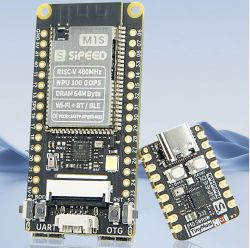
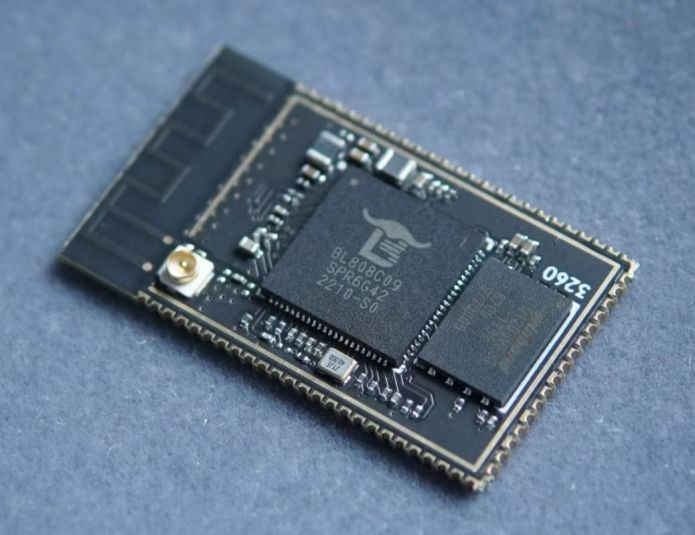
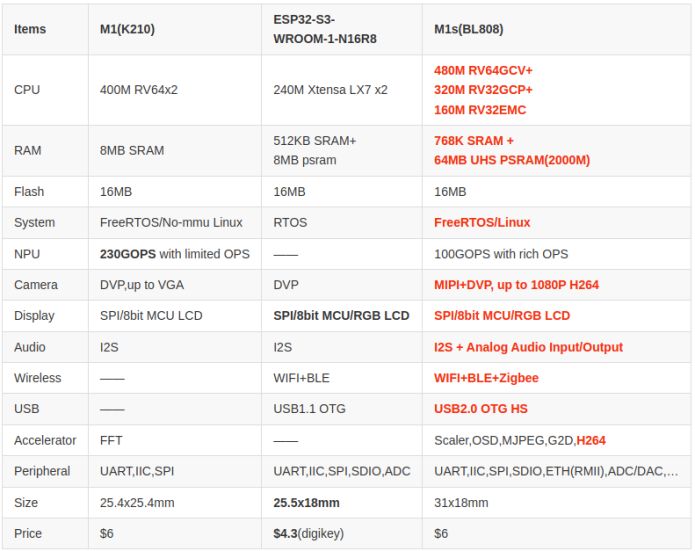
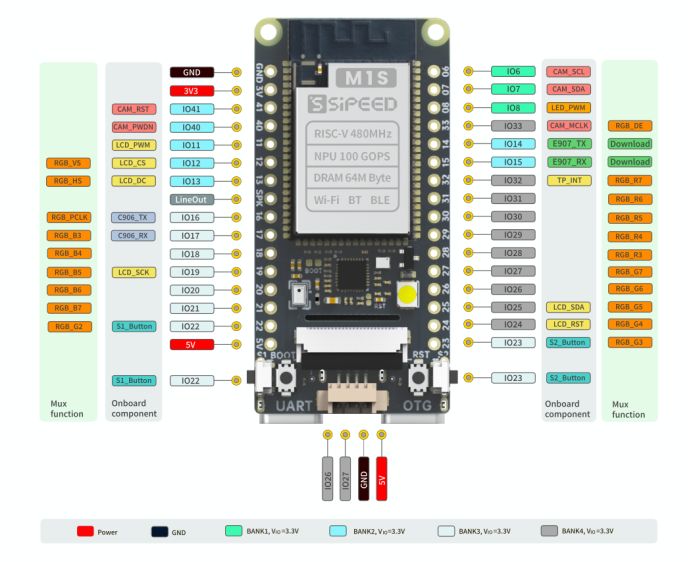
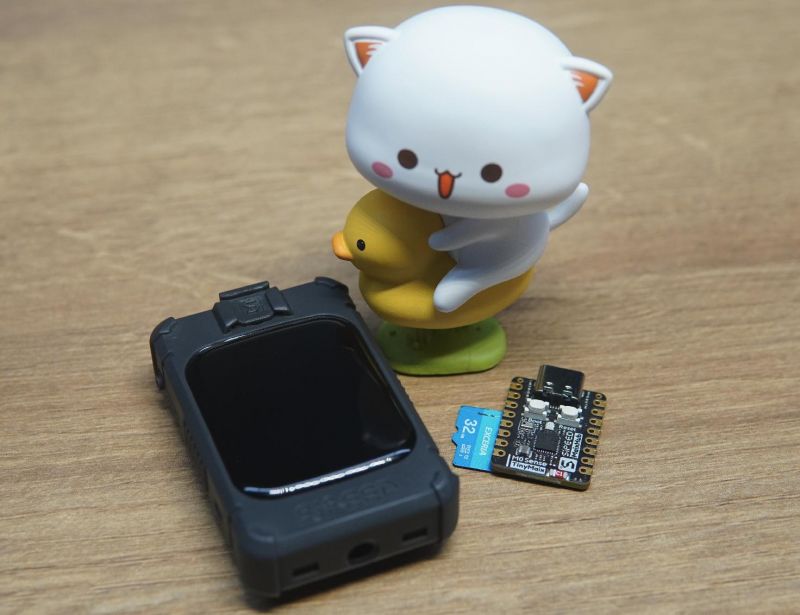
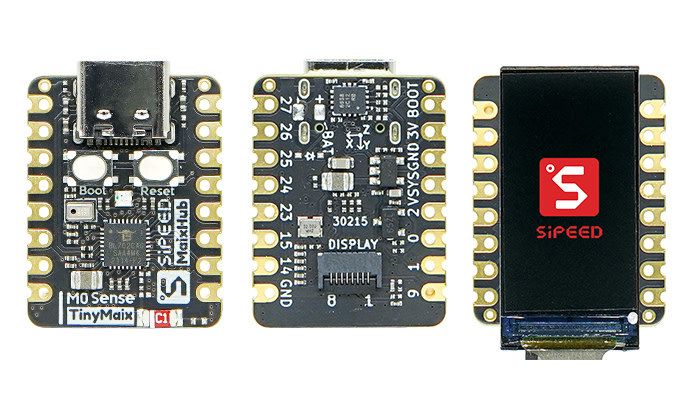
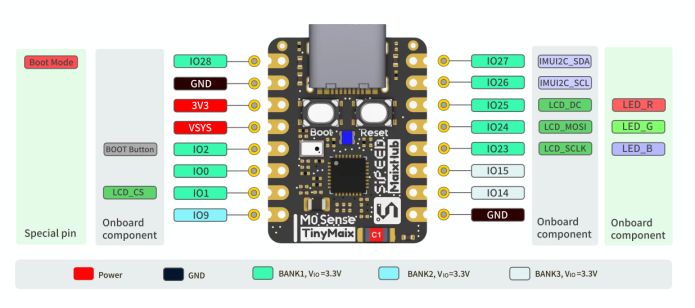
Comments
It is also "inaccurate" that the ESP32-S3 supports USB 1.1 OTG, because it supports USB 2.0 OTG Full-Speed Interface. The maximum size of the external SPI flash is 1GB (yes, exactly). Omitted from the... [Read more]